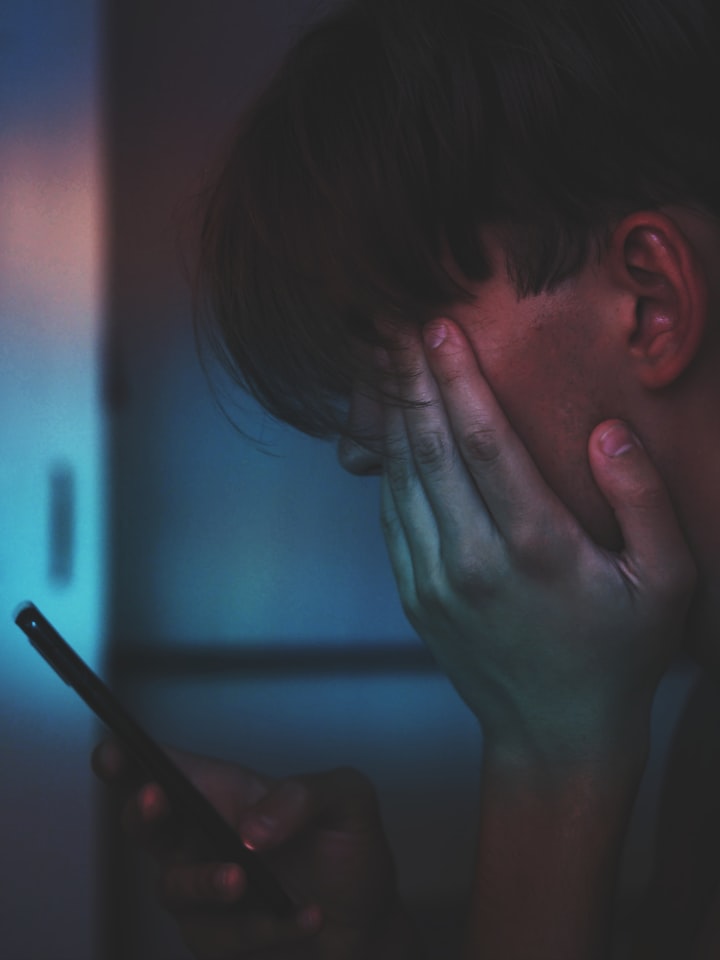Surviving The Darkest Of Places
By Jason Morton

Feeling Hopeless
Arguably, the worst feeling in the world is hopelessness. Hopelessness, defined, is a belief that things won't get better or that there is no way to succeed. It is an emotion characterized by a lack of hope, optimism, and passion. That emotion leads to no expectation of future improvement or success. All of this will contribute to a dark or low sense of being and can change how one looks at themselves, other individuals, their personal situation, and even the world around them.
Hopelessness is a recognized symptom of many behavioral and mental health issues, including depression, anxiety, bipolar, eating disorders, posttraumatic stress, substance abuse, and suicidal ideations. Many people experiencing hopelessness are suffering from depression and may experience suicidal thoughts or ideations. The suicidal ideations, something we've all probably seen or heard from someone, are what to look for in people we love. Everybody's going to have some down days. Those are normal. It's when those down days take over and create changes in our day-to-day lives that we might need a little help.
People that are suffering from hopelessness may make statements such as:
My situation will never get better.
I have no future.
No one can help me.
I feel like giving up.
It is too late now.
I have no hope.
I will never be happy again.
The loss of interest in important objects, activities, events, or people can oftentimes come from hopelessness. Someone who has become hopeless may no longer value things that were once important. The emotions are associated with a lack of inspiration as well as feelings of powerlessness, helplessness, abandonment, captivity, oppression, and isolation. Studies indicate that the feeling of hopelessness is closely linked to poor mental, emotional, and often physical health.
Thoughts of Suicide
Thoughts of suicide are a real thing that sometimes can be triggered by hopelessness. In June life may be great, even something that your friends and loved ones envy. In September, due to many possible influences, you may find yourself feeling suicidal, considering suicide as a solution, even contemplating how to commit the act. Life can be hard, unyielding, and beat you down. It might even keep you down for a while. We experience losses that can lead to fear and depression about the world. If you haven't been there, then you're one of the lucky ones.
In February of 2014, while working one day, I myself suffered one of those life events that caused a mental health problem. There are mental health emergencies, which are usually short-term issues. There are mental health disorders that can be permanent, long-lasting parts of a person's life. Mine, according to the therapist I had to see, was the emergency. I suffered a severe blow to the head, followed up by several more. This lead to several months of me suffering the worst "migraines" or headaches I could imagine. I couldn't get comfortable, I couldn't sleep, and at times I would get things stuck in my head playing over and over again on high volume. The dreaded Ear Worm can drive you mad like the mad hatter.
After months of pain, I was at my lowest. I was losing my mind, constantly down, constantly stuck in the past as the victim of an assault I couldn't get out of my head. After several days of popping pills to the point my insides were bleeding, dropping shot after shot of whiskey, and still feeling like my head was in a vice with someone tightening it up, I found myself in one of those moments in time people wonder about. I was in the "How could he have done that moment." I sat down on the edge of my bed, ready to give up and do anything I could to make the pain go away, and that's when I looked in my closet at what could have been a permanent solution, my duty weapon.
Passive Suicidal Ideation
Passive thoughts of suicide, or suicidal ideation, are when you think about your death but don't plan to do it. At that moment I thought about it, I am told, I was somewhere in between passive and active. It all would have been so simple, stand up, walk across the room, put it in my mouth, and pull the trigger. I was there, I wanted to die. Truthfully, I just wanted not to hurt every day.
Now, I imagine a world where I didn't have anybody. I imagine a world where I couldn't imagine how people would feel if I gave up on them, on myself. The people that I would have left crying over my grave because I couldn't hold on. The next day, I walked into work, sat down, and bared my soul to the four bosses above me. I had obviously pushed to get back to work before I was healed, and I knew this. Foolish pride got in my way. I had a need to face the "bad guy" that had put me down, making sure he knew he couldn't finish the job. What I should have focused on was my long-term health. It was concussion number 5 after all.

Active Suicidal Ideation
Active Suicide Ideations mean that the person has thoughts of suicide or self-harm and has developed a plan to carry it out. These are the people who are in the most need of help. They need someone to reach out to them, to make them know that there is someone that cares. Whether it's a long talk with a valued friend, or a complete stranger doing a job, they need to be talked off the cliff the most out of anybody.
I've heard the saying, "If they're going to do it, nobody can stop them." Sometimes we think that there are no signs that can help us recognize when someone has put together a plan to commit suicide. It is, oftentimes, a private topic or feeling, with some industries or occupations only in recent years tackling the issues that cause suicide. I spent the majority of my life in one of those professions, afraid of the stigma of being labeled suicidal, nuts, or crazy. But, there are warning signs that we should be aware of for the sake of our friends, family, and even coworkers in some higher-risk fields. They're broken down into three categories, behavioral, physical, and psychosocial.
Behavioral Symptoms:
Giving away possessions
Talking about death, dying, or not being around in the future
Using phrases that make death sound like an option such as “When I am gone,” “If I were to kill myself…”
Saying goodbye or making amends with loved ones
Collecting items that are harmful or potentially dangerous
Social withdraw
Increased drug or alcohol usage
Not participating in activities that were once enjoyable
Engaging in risky or potentially harmful behaviors
Physical Symptoms:
Scars from past attempts at suicide or self-harm
Drastic or sudden change in eating or sleeping patterns
Chronic illness
Cognitive Symptoms:
Obsessing over the belief that the only end to emotional pain is through death or suicide
Psychosocial Symptoms:
Feeling Helpless or Hopeless
Feeling that emotional pain is never-ending
Self-hatred/ self-loathing
Paranoia
Emotional pain
Frequent or drastic mood swings
Sudden changes in personality or behavior
Intense anxiety and increased irritability
I'm writing this as a survivor of a mental health emergency, and because I've coped with being in a place that is dangerous, often deadly, and can be avoided. There is the belief in some people that asking for help makes you weaker. But, admitting that you need help, doing the work to get back to life, and coping with the things that happened doesn't make you a weaker person. It means you had the strength, it was tested, and you won. As long as you're still here, you won.
References:
Department of Psychiatry Penn Behavioral Health http://www.med.upenn.edu/suicide/beck/scales.html
Hanna, D., White, R., Lyons, K., McParland, M. J., Shannon, C. & Mulholland, C. (2011). The structure of the beck hopelessness scale: A confirmatory factor analysis in uk students. Personality and Individual Differences, 51, 17-22. Retrieved from http://www.researchgate.net/profile/Ciaran_Mulholland/publication/251531364_The_structure_of_the_Beck_Hopelessness_Scale_A_confirmatory_factor_analysis_in_UK_students/links/54394f760cf2d6698be16245.pdf
The Difference Between Passive and Active Suicide Ideation Dr. Melissa Estavillo The Biltmore Psychology and Counseling. Retrived from https://www.biltmorecounseling.com/anxiety/the-difference-b-n-passive-and-active-suicide-ideation/
About the Creator
Jason Ray Morton
I have always enjoyed writing and exploring new ideas, new beliefs, and the dreams that rattle around inside my head. I have enjoyed the current state of science, human progress, fantasy and existence and write about them when I can.






Comments
There are no comments for this story
Be the first to respond and start the conversation.